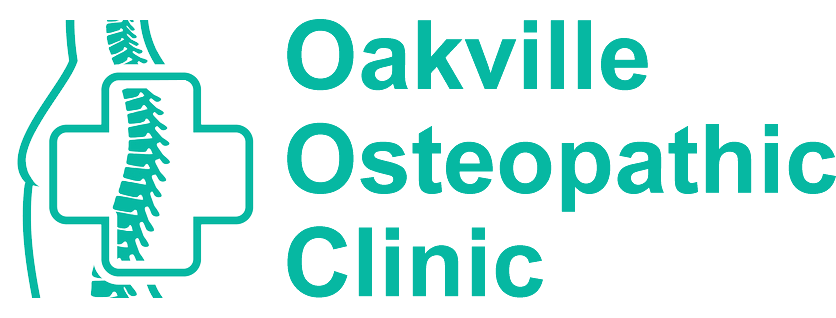What Conditions Can Be Treated With Osteopathy, And How Effective Is It In Treating These Conditions?
Have you ever heard of osteopathy? It’s an alternative therapy that is becoming increasingly popular – and with good reason. Osteopathy can help to treat a wide range of conditions, from chronic pain to digestive problems. But how effective is it in treating these ailments? In this article, we’ll be taking a look at the different conditions that can be treated using osteopathy, as well as exploring just how successful it can be.
Osteopathy has been around for centuries, even if its popularity has waxed and waned over time. Today there are thousands of qualified practitioners who use gentle hands-on techniques to manipulate the body’s musculoskeletal structure into balance. This helps relieve tension, improve posture, increase flexibility, and reduce pain – all without the need for drugs or invasive surgery.
So what kind of conditions can be successfully treated by osteopaths? From arthritis and backache to sinusitis and sciatica – plus many more! We’ll explain why each condition might benefit from this type of treatment, before looking closely at whether or not patients have seen tangible results after receiving care from an osteopath. So stay tuned…
Definition Of Osteopathy
Osteopathy is an alternative medical practice that focuses on treating the body as a whole, rather than individual parts. It works to restore structural balance and proper functioning of the body through massage, stretching, joint manipulation, and other manual techniques. Think of it like a jigsaw puzzle – if one piece isn’t in its right place, then all the pieces won’t fit together properly. Osteopaths work to ensure every piece of your body is where it should be so you can experience optimal health. With this holistic approach, osteopathy effectively treats many different types of conditions by addressing their root cause(s). Let’s move on to explore what these specific conditions are and how effective osteopathy is in treating them.


Types Of Conditions Treated
Osteopathy is an effective and holistic form of healthcare that can be used to treat a variety of conditions. It involves the use of manual techniques such as massage, stretching, joint mobilization, and manipulation in order to restore balance within the body’s natural structure. Osteopathy can help with musculoskeletal issues including back pain, neck pain, shoulder pain, and headaches. It has also been shown to have positive effects on reducing stress levels, improving circulation, aiding digestion, relieving respiratory problems, and helping with sports injuries. Furthermore, osteopathy may aid in treating chronic conditions like arthritis or fibromyalgia by addressing underlying muscular imbalances which could be contributing to the patient’s symptoms. All these conditions can benefit from the gentle yet powerful application of osteopathic treatment. Restoring normal movement and function throughout the body it allows for improved health overall.
The effectiveness of osteopathic treatments depends largely on each individual case; however many patients report feeling an improvement after just one session. The number of sessions needed will vary depending on the condition being treated but it is generally recommended that 3-5 sessions are taken before considering any further treatment options. With this said, some people may find they need more than 5 sessions while others feel better after only 1 or 2 visits – it really does depend on the person’s own needs and response to treatment. As always when deciding upon any type of medical care it is important to weigh up both the benefits and risks involved in undergoing osteopathic treatment so that an informed decision can be made about whether it is right for you or not.
Benefits And Risks Of Treatment
Osteopathy is like a tapestry of treatments that can be used to treat a variety of conditions. It’s often applied in the treatment of musculoskeletal pain, headaches, and sports injuries, as well as stress, digestive issues, sleep disturbances, and menstrual cramps. The benefits are considerable: it helps improve mobility and flexibility; reduces muscle tension; relieves joint pain; promotes relaxation; boosts circulation; stimulates healing and balances the body’s energy.
However, there are risks involved with osteopathic treatment too. Osteopaths must take into account any underlying medical conditions before commencing treatment, such as fractures or cancer. In addition, they must assess whether the patient might suffer from adverse reactions resulting from manipulation of the spine or other joints. Therefore, one should always consult their doctor before embarking on an osteopathic treatment program. From here we will move on to discussing research on the effectiveness of these techniques.
Research On Effectiveness
Moving on from the benefits and risks of osteopathy, let’s take a look at research on its effectiveness in treating various conditions. Osteopaths have reported successful treatment for many health issues such as musculoskeletal pain, spinal problems like sciatica, joint mobility issues, headaches and migraines, digestive disorders, menstrual cramps, and premenstrual syndrome (PMS), fatigue, and stress-related issues. It has also been found to be effective in helping people with chronic neck or back pain who did not respond to conventional treatments.
Recent studies suggest that osteopathic treatment is an effective option for reducing both acute and chronic pain. For example, one study showed that osteopathy was more effective than traditional medical care for relieving lower back pain over a period of six months. A recent systematic review concluded that patients treated with osteopathy experienced significantly less disability compared to those receiving standard care alone. In addition, there were fewer recurrences of symptoms among those who had received osteopathic therapy. These results indicate that osteopathy may be an appropriate alternative form of management for these types of ailments.
Osteopathy is a form of natural medicine that can be used to treat many conditions. It has benefits and risks like any other medical treatment, but research shows it can be effective in treating certain ailments. If you’re considering this option for yourself or someone close to you, remember the old adage: “An ounce of prevention is worth a pound of cure”. Talk with your doctor about what kind of treatments may benefit you most. Osteopathic care might just be the remedy for whatever ailment you are dealing with.
So if you want to give osteopathy a try, always remember to consult with an experienced practitioner who will assess your individual needs and tailor their approach accordingly. With a proper diagnosis and treatment plans, along with lifestyle changes such as exercise and nutrition, osteopathy can help improve overall health while reducing pain and discomfort from various conditions.
